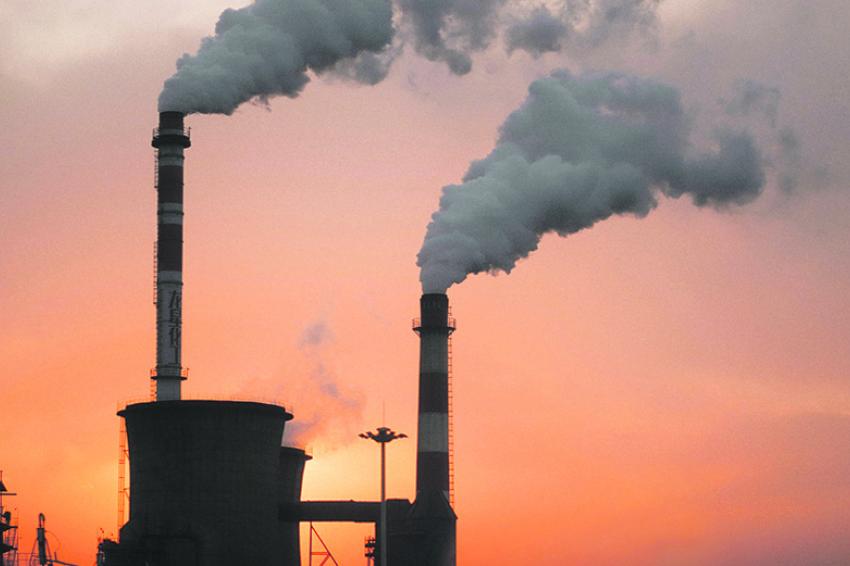Environmental Reform of China’s Chemical Industrial Parks
Chemical Companies Need to Ensure Compliance and Mitigate Business Interruption Risks
The Yangtze River Protection Law and other recent legislation aimed at the chemical industry in China are reshaping industrial safety, land use, and environmental practices by phasing out low-tech and high-polluting industries. The devastating 2019 factory explosion at Tianjiayi Chemical plant in Jiangsu province has also spurred new policies and regulations, with important implications for chemical industry operations and factory locations. Looking ahead, carbon emissions regulations are also expected to impact the cost structure of China’s chemical industry.
In the past 20 years, the chemical industry in China has grown rapidly and today accounts for close to 40% of worldwide chemical-industry revenue. Understanding environment-related regulatory and policy shifts now in full swing in China is critical to ensuring compliance and reducing business interruption risks for chemical companies either operating in or sourcing from China.
Yangtze River Protection & Industrial Transformation
The Yangtze River Protection Law went into effect in March 2021 and aims to clean up chemical factories within 1 km from the river, offering important new protections to the largest river basin in China. At 6,300 km in length, the river flows through eleven provinces and is home to a third of China’s population. Tens of thousands of multinational corporations (MNCs) have their sites or suppliers located within the region. The Yangtze River Economic Belt currently produces close to half of China’s GDP, effectively making it the third largest economy in the world.
The Yangtze River Protection law is designed to coordinate national efforts to restore ecology, mitigate pollution, and transform industrial activity throughout the region. This includes new levels of oversight for phasing out high-polluting and high-energy consuming industries, shutting down sites with repeated safety and environmental violations and prohibiting the construction of new factories.
Most dramatically, the new law also accelerates the reorganization of hundreds of industrial parks into sector-specific megasites, to be located at least 1 km from the Yangtze river and its major tributaries. Even before this law, in 2019, it was reported that 197 factories would be reconfigured into five major parks/zones in this area.
Emergency Actions Led by Jiangsu Province
The coastal province of Jiangsu is one of the leading chemical production provinces in China and has an industrial infrastructure that provides steady demand for a wide range of chemical products as raw materials.
On Mar. 21, 2019, a massive explosion erupted at Tianjiayi Chemical factory in Xiangshui Ecological Chemical Industrial Park, one of over 60 such parks in Jiangsu province. The blast was caused by the combustion of illegally-stored nitrified waste and was equivalent in force to a magnitude-2.2 earthquake. It killed 78 people, hospitalized 640, and caused water, soil and air contamination in the vicinity of the explosion. To demonstrate the seriousness of this offense, fifty-three people judged responsible for the Tianjiayi blast were sentenced to prison in November 2020.
According to the official accident report issued by the State Council, Tianjiayi Chemical factory had repeatedly violated safety and environmental codes and the factory had experienced other on-site explosions. Despite its record of violations, Tianjiayi was a second-tier chemical supplier for several major multinational companies.
Following Tianjiayi, the central government issued a “Three Year Action Plan for National Work Safety Remediation” aimed at addressing substantial gaps in safety implementation and modernizing governance capabilities for MNCs and Tier 2 and Tier 3 chemical suppliers. In 2020, Jiangsu’s provincial government rolled out plans to remediate chemical industrial parks and that year, 772 chemical companies located in Jiangsu along the Yangtze river were closed.
Recommendations for Chemical Industrial Parks
Recent carbon policy documents published by China’s central government outline steps within the petrochemical and chemical industries that need to be taken to reduce carbon emissions, in line with national goals of peaking emissions by 2030 and achieving carbon neutrality by 2060. One EHS manager interviewed by Greenment who works for a large chemical multinational, stated that they expect carbon policy to bring significant changes to chemical sector operations:
“Recently, [the] carbon issue [has] become a hot topic. We have not implemented any measures in response to the carbon goals announced by China, but we are paying close attention to the carbon policy. The chemical industry is a key carbon-emission industry, and we expect increased cost of raw materials supply in the future due to carbon reduction requirements.”
Kevin Liao, managing director of Celanese chemical company in China, recently shared with the American Chamber of Commerce in Shanghai how growing focus from the central and provincial governments are re-shaping the chemical industry in China in important ways:
“With the changes in [Environment, Health & Safety] EHS regulations, chemical manufacturers are paying more attention to safety training and have to upgrade their sites to meet these regulations. As for the environment, chemical emissions are one of the key focus areas. For example, there is a regulation in Jiangsu province, that if you want to apply for one ton of emission quota, you need to reduce two from the existing site.”
Liao added: “There’s also an increased focus on quality and safety standards from the [central] government. We brought our best technology and best in class standards when we built our plants in China. The enhancement of EHS regulations has helped to filter out those small producers who are not in compliance. In addition, the Chinese government also has strict regulations on chemical transportation, which means increased costs for some small producers. [W]ith the continuous focus on environmental and safety standards in the industry, the permitting process for new chemical projects is expected to take a longer time and the cost for operation may also increase.”
For chemical companies with supply chain or operations in China, the following steps are recommended for preparing for the new opportunities and risks associated with shifts in environmental, safety and land use standards:
- Know the regulations: Independent and/or professional validation of correct interpretations of potentially-applicable regulations and standards;
- Choose the right site: A site selected in alignment with current and expected land use planning and environmental policy directions is a key first step to ensure its long-term viability;
- Choose the right industrial park: An industrial park with low environmental or safety infrastructure/performance can bring sudden changes in regulations in the future, and may influence the ability of the site to operate safely;
- Verify viability of key suppliers: Assess the extent to which suppliers have engaged in regulatory applicability analysis and industrial park and/or site selection prudently;
- Stay ahead of new carbon regulations: Plan early to reduce direct and indirect carbon footprint, reduce business impact of new regulations and/or gain a competitive advantage;
- Optimize industrial production process and facility: Avoid any industry type or operation subject to phase-out, reduce pollutant and carbon emissions;
- Perform or contract for regular self-inspections: Monitor environmental, health and safety performance to determine issues and risks, carry out mitigation measures immediately; and,
- Gather ground-level intelligence: Maintain close connection and communication with local government as well as similar industrial enterprises to be alerted about EHS requirements and political trends early.
Industrial and chemical zones have been pivotal to China’s rapid development and economic growth over the past several decades, with little consideration for long-term environmental and safety impacts. The consequences of this growth are now being reckoned with in important and far-reaching ways. In addition to changes in safety, environmental and land use standards, carbon policy will continue to further reshape the chemical industry. It will be critical for chemical companies with supply chains or operations in China to stay abreast of local, provincial and central government guidelines in order to mitigate risk and effectively adjust to these important industrial transformations.
Shuying „Irene“ Xu, EHS Senior Consultant; Jianqiao Xu, EHS Senior Consultant; and Christopher Hazen, Director, Greenment, Shanghai
Harmony Eberhardt, Consultant, Horizontal 8, Oregon, USA
Contact
Greenment
26th Floor, Gang Tai Plaza,700 Yan An Road East
200001 Shanghai
China
+86-21-53210780
+86-21-53210790










